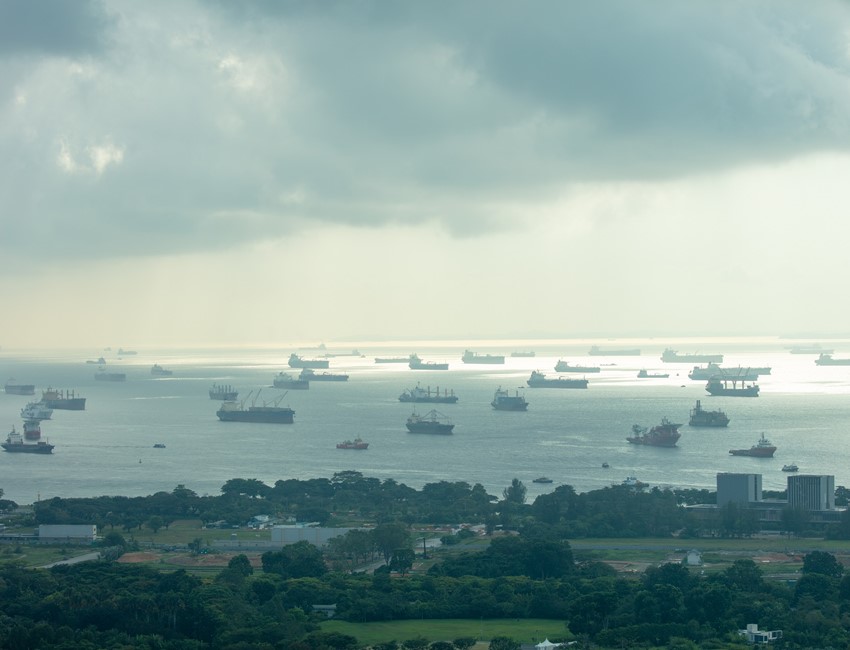Switzerland – The pioneering study by the Swiss commodity trading company Trafigura demonstrates the critical contribution hydrogen-based fuels may make to the decarbonization of the maritime industry.
In order to address the growing demand for low-emission fuels around the world, the study highlights the possibility for ‘Global South’ nations to generate green ammonia and green methanol at prices that are competitive.
Onboard carbon capture and biofuels, according to Trafigura, have their place, but switching to low-emission fuels is the only way to truly deep decarbonize shipping. By using LNG as a maritime fuel and other cutting-edge techniques like decarbonizing liquefaction, greenhouse gas emissions can be reduced by 20% to 25%. This, however, falls short of the thorough and quick decarbonization that society demands.
Global South
According to the study, the ‘Global South’ has the ability to produce more than 4,000 exajoules of reasonably cost green hydrogen annually, much exceeding the estimated 20 to 40 exajoules needed for shipment. For the future needs of the shipping industry, regions in Africa, Asia, and South America have a lot of potential for producing substantial amounts of electrofuels like methanol and ammonia. These nations now have the chance to establish new export markets and generate lots of high-paying jobs.
The research builds on IRENA’s work and highlights countries including Argentina, Brazil, Chile, Colombia, Egypt, India, and Morocco that are well-positioned to manufacture green hydrogen. These nations have a wealth of renewable energy resources that can be used to produce green hydrogen, an essential feedstock for electrofuels.
Decarbonization targets
The ability of the shipping sector to reach consensus on aggressive decarbonization targets and set a global price on carbon for marine fuels is crucial, according to Margaux Moore, co-author and Head of Energy Transition Research and Venture Investments at Trafigura.
The cost-competitiveness of electrofuels made in the Global South is also highlighted in the whitepaper. In comparison to the USD 1,200 to USD 1,500 per tonne in Europe, production costs for electrofuels utilizing green hydrogen are anticipated to be around USD 750 per tonne in this region. Electrofuels made in the Global South are still 20% less expensive than those made in Europe, even at a price of USD 4.00 per kilogram of green hydrogen. But in order to level the playing field and promote fair competition, a carbon price is essential.
The International Maritime Organization (IMO) must put a global price on carbon for marine fuels and set aggressive decarbonization goals in order to fully fulfill this potential. A critical opportunity to set a zero or minimal net zero greenhouse gas emissions objective by 2050 as well as challenging goals for 2030 and 2040 will arise when the IMO revises its GHG strategy in 2023.
Zero-emission fuels
According to experts, in order for the sector to comply with the Paris Agreement, scalable zero-emission fuels should account for at least 5% of the bunker market by 2030 and 27% by 2036. The authors of the report believe that it is feasible to use 5% zero-emission fuels in shipping by 2030, but that urgent action and the implementation of a carbon tax by 2025 are required to close the cost gap between existing fuels and hydrogen-derived substitutes.
The IMO must take decisive action and set decarbonization targets that are supported by science in order for the shipping industry’s decarbonization to proceed as planned. The industry can draw the capital required to modernize its infrastructure, enabling extensive retrofits and the building of new ships, by advancing the development of low- and zero-emission fuels and creating international fuel standards.
Acting is best done right away. Delaying will simply drive up the final cost of decarbonization and impede the industry’s transition to a resilient and sustainable future.





